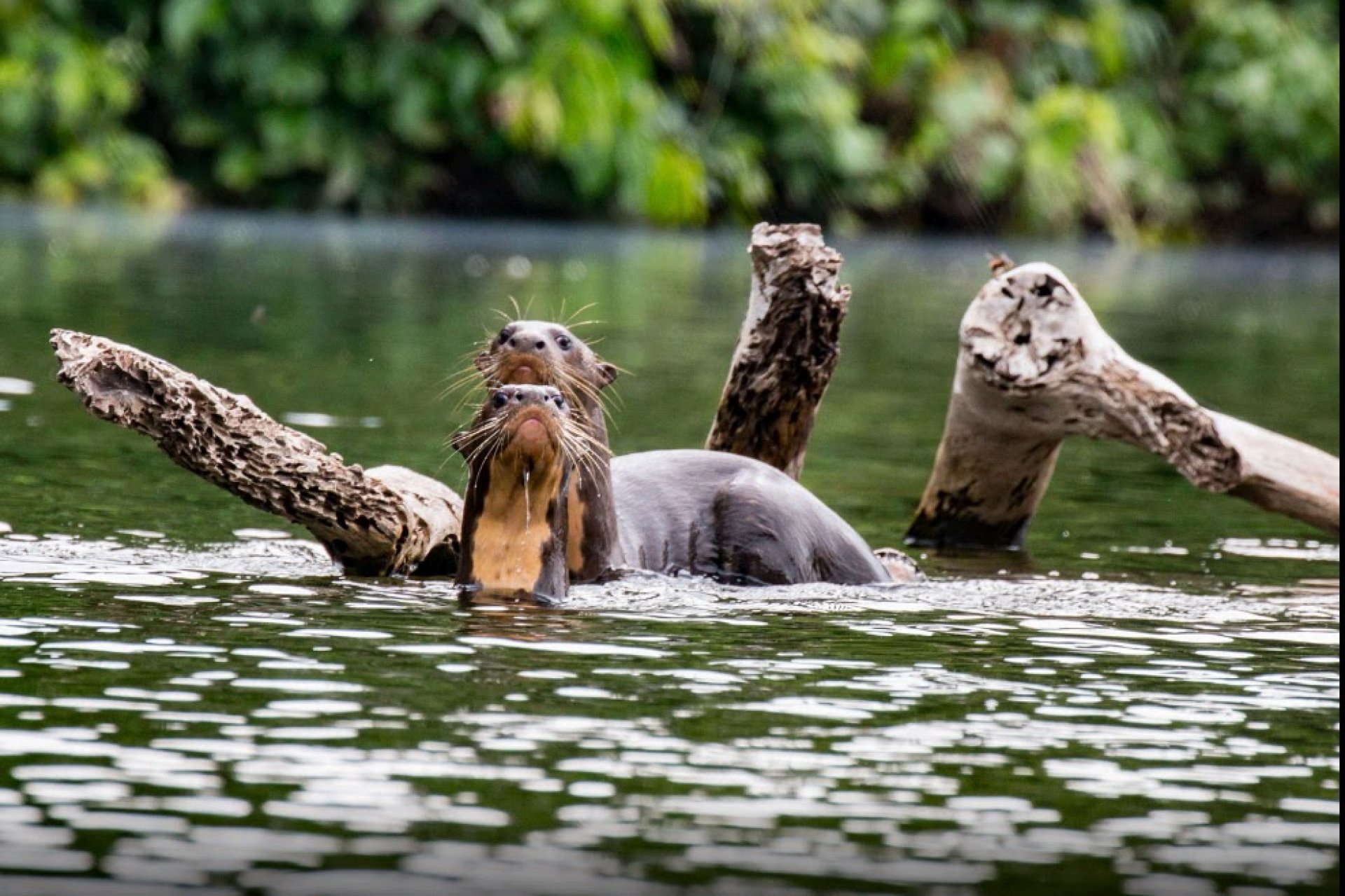
The Cuyabeno reserve belongs to the National System of Protected Areas of the Ministry of the Environment (MAE), it is located in the Province of Sucumbíos, northeast of the Amazon Region of Ecuador, bordering with Colombia.
It is the habitat where the largest amount of wildlife is found, and where a great diversity of flora and fauna is found. The area has a rainy climate, and a system of lagoons, rivers and a tropical forest have been formed.
Observe the extraordinary biodiversity of the Cuyabeno Wildlife Reserve, its lagoons and flooded forests populated by macrolobes, where dolphins, alligators, piranhas, manatees, anacondas, and otters live. Get to know its flora and fauna on canoe rides and day and night walks.
When you board the canoe that will take you inside the Cuyabeno Wildlife Reserve, sailing for two hours down the river of the same name, you won't be able to avoid the sensation of amazement and joy produced by the contemplation of those masterpieces of nature that are the birds and the flowers, the butterflies with large and bright blue wings flying next to the boat, the monkeys jumping in the bower or the palm trees and the trees submerging their trunks in the black waters of the river and the lagoons.
The guides, who describe nature to the tourists in the canoes, do not tire of raising their index finger at every moment to show the characteristics of a tree or a plant of the exotic flora of Cuyabeno (which registers 12,000 species of trees and plants) or to show some mammal, reptile, bird or amphibian of the immense fauna of this Reserve.
“Weird things” that you will see in the Reserve
When traveling by canoe through the Reserve, when you least expect it, your gaze may come across a bunch of macaws or parrots in the top of a tree or the incredible hoatzin, which abounds in the area, the only bird that looks like a cow, not because of its anatomy but because it is ruminant like her, but, in addition, this rare species of bird has an extraordinary ability to swim and you could see that its chicks have claws on the ends of their wings that are used to climb the trees, like monkeys, when they accidentally fall into the water since they make their nests in the trees of the flooded forest.
And "strange thing" at dusk you will also see tourists, that is, other people who, like you, have stayed in one of the lodges nestled in the jungle of the Reserve and are led, at the end of the day, to the Laguna Grande to watch the sunset and swim in “tea water”. The color of these waters –also called black waters– originates from tannins, a substance that results from the decomposition of plant tissues of trees in the water, which floods this type of forest known as igapó.
At night, a sky full of stars, which seems to have been sprinkled with phosphorescent sugar (due to the absence of light pollution), can accompany you on your canoe ride to see alligators. Small and swift silhouettes flying ahead or near the canoe will attract your attention; the guide will explain to you that they are harmless fishing bats. It may also be that the rain accompanies you, in which case the atmosphere – with other nuances – will continue to be equally mysterious and seductive.
 BOOK SHUTTLE SERVICE
BOOK SHUTTLE SERVICE
